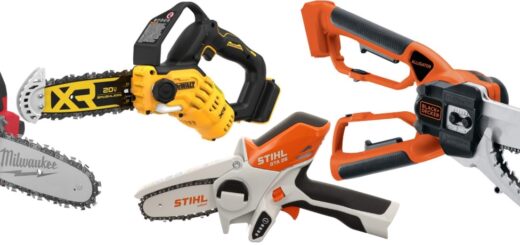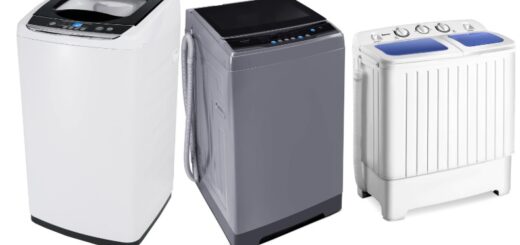Winterize Your Home This Weekend with These Low-Cost Tips
The arrival of winter often brings the familiar hum of the furnace and the dread of high heating bills. Many homeowners face a constant battle against drafty rooms and cold floors. This is not just uncomfortable; it’s expensive.
Space heating is the largest energy expense for the average American family. It accounts for about 45 percent of utility bills. A large portion of that heated air escapes through hidden cracks and gaps.
This guide shows that the best solutions are not always the most expensive. Simple, low-cost DIY projects can offer a remarkable return on investment. They improve comfort and protect your home’s long-term value.
The EPA estimates that air sealing and proper insulation can save an average of 15 percent on heating and cooling costs. The U.S. Department of Energy notes that simple upgrades can lead to savings of 5 to 30 percent on monthly energy bills.
This report is a practical, step-by-step manual for homeowners. It prioritizes tasks by their return on investment, starting with the highest-impact, lowest-cost actions. This guide will help you keep your home cozy and your wallet fuller all winter long.
Your #1 Priority: A Comprehensive Guide to Finding and Sealing Air Leaks
Before any other task, focus on making your home’s envelope airtight. Air sealing is the most effective and cost-efficient strategy for reducing heating costs. The money spent on caulk and weatherstripping often pays for itself in energy savings within a single year.
A DIY air-sealing project is rated as “EASY.” It can be completed in one to four hours for a total cost of $3 to $50. The potential energy savings are 10 to 20 percent.
Playing Detective: How to Conduct a DIY Home Energy Audit
The first step is to find the source of air leaks. Windows and doors are common suspects, but the biggest leaks are often in less obvious places. Look where pipes and wires enter the house, around chimneys, and in unfinished spaces.
The cumulative effect of these small gaps can be like leaving a window open all winter. A systematic inspection is necessary to find these hidden energy drains.
This cycle wastes a lot of energy: Warm air rises in your home and escapes through cracks in the attic. This creates a suction effect that pulls new cold air in through gaps in the basement or lower levels. Sealing leaks in both the highest and lowest parts of your home is the best way to stop this.
You can perform an effective DIY energy audit with a few simple techniques:
- Visual Inspection: Walk through your home’s interior and exterior. Look for cracks where different building materials meet.
- The Incense Test: On a cool, windy day, turn off all fans and the furnace. Light an incense stick and hold it near suspected leak points. If the smoke wavers, you’ve found a leak.
- The Flashlight Method: This requires two people at night. One person shines a flashlight along the edges of windows and doors from outside. The person inside looks for pinpricks of light.
- The Dollar Bill Test: Close a door or window on a dollar bill. If you can pull the bill out without resistance, the weatherstripping is not creating a tight seal.
The Homeowner’s Sealing Toolkit: Choosing the Right Weapon for the War on Drafts
Once leaks are identified, selecting the correct material is crucial. The two primary tools are caulk and weatherstripping. Caulk fills gaps between stationary components, while weatherstripping seals gaps around moving parts like doors and windows.
TABLE 1: Choosing the Right Caulk for the Job
| Caulk Type | Best For | Key Info |
|---|---|---|
| Silicone | Exterior windows, metal, vinyl | Waterproof & highly flexible. Not paintable. Dries fast. |
| Polyurethane | Wood surfaces, high-stress areas | Very durable and flexible. Paintable. Cures slowly. |
| Latex / Acrylic | Interior trim, baseboards | Easy to apply and clean up (water). Paintable, but less flexible. |
| Butyl Rubber | Gutters, foundations, roofs | Extremely durable & waterproof. Can be messy to apply. |
| Rope Caulk | Temporary window sealing | Non-hardening. Very easy to apply and remove. Great for renters. |
TABLE 2: A Guide to Weatherstripping Materials
| Material Type | Best For | Durability | Installation |
|---|---|---|---|
| Adhesive Foam | Small, irregular gaps (low traffic) | Low (1-3 years) | Very Easy |
| V-Strip (Tension) | Window sides, door frames | High (Long-lasting) | Easy-Moderate |
| Felt | Minor gaps (older doors/windows) | Low (Wears easily) | Easy |
| Tubular Rubber/Vinyl | Exterior doors, large gaps | Very High | Moderate |
| Door Sweep | Bottom of exterior doors | Very High | Easy |
Step-by-Step Application Guides for an Airtight Home
Proper application is just as important as material selection. Following these steps will ensure a professional-quality seal.
How to Apply Caulk:
- Prepare the Surface: The area must be clean and dry. Remove any old caulk and peeling paint.
- Prepare the Caulk Gun: Cut the tip of the caulk cartridge at a 45-degree angle. Puncture the inner seal.
- Apply the Caulk: Hold the gun at a 45-degree angle. Squeeze with steady pressure and move smoothly along the gap.
- Smooth the Bead: Immediately after applying, use a finishing tool or a wet finger to press the bead into the crack and smooth the surface.
How to Install Weatherstripping:
- Clean the Surface: Weatherstripping must be applied to a clean, dry surface.
- Measure Carefully: Measure the area twice before cutting the material.
- Apply the Material: Apply the weatherstripping snugly. The material should compress slightly when the door or window is closed.
How to Install Window Insulation Film Kits:
For homes with older, single-pane windows, plastic window insulation film is a highly effective and inexpensive option.
- Clean the Window Frame: Thoroughly clean the interior window frame and let it dry.
- Apply the Tape: Apply the provided double-sided tape around the perimeter of the window frame.
- Attach the Film: Press the plastic film firmly onto the tape, starting at the top.
- Shrink the Film: Use a standard hairdryer on high heat to shrink the film until it is tight and wrinkle-free.
Smart Airflow and Heating: Maximize Warmth, Minimize Cost
Once your home is sealed, optimize your heating system’s performance. These strategies make the system work smarter, not harder. Most of these tasks are free and can be completed in minutes.
The Simple Flip: Reversing Your Ceiling Fan for Winter
This is one of the most effective yet overlooked tasks. Hot air rises and collects near the ceiling. In winter, set your ceiling fan to rotate clockwise on its lowest speed. This pushes the trapped warm air down into the living space. This simple adjustment can cut heating costs by as much as 10 percent.
Passive Solar Heating: Using Curtains to Your Advantage
The sun is a free source of heat. During the day, open all curtains on south-facing windows to let sunlight in. As soon as the sun sets, close them. This traps the day’s warmth inside and reduces heat loss through the glass at night.
Furnace Fundamentals: The Critical Importance of a Clean Filter
A clogged furnace filter restricts airflow. This forces the furnace to work harder, wasting energy and straining the equipment. Inspect filters monthly during the heating season and replace them as needed.
The replacement process is simple:
- Locate the filter compartment on the furnace.
- Slide out the old filter and note its dimensions.
- Observe the airflow arrow on the filter’s frame.
- Slide the new filter into the slot, ensuring the arrow points toward the furnace blower motor.
For energy efficiency, a basic, inexpensive filter that is changed frequently is often the most sensible choice.
Taming Your Thermostat: Optimal Settings for Maximum Savings
The U.S. Department of Energy recommends setting the thermostat to 68°F while at home. Lower it when you are asleep or away. Turning the thermostat back by 7-10 degrees for eight hours a day can save as much as 10 percent per year on heating bills. A programmable or smart thermostat automates these savings.
Managing Your Fireplace: Don’t Let It Be a Heat-Loss Highway
A traditional fireplace can be a major source of heat loss. An open chimney damper is like leaving a window wide open. To prevent this:
- Keep the Damper Closed: The damper must be tightly closed unless a fire is actively burning.
- Seal the Hearth: Inspect for and caulk any gaps around the fireplace hearth.
- Ensure Professional Cleaning: Before the first fire of the season, have the chimney professionally inspected and cleaned to remove flammable creosote buildup.
Preventing a Water Catastrophe: A Guide to Protecting Your Plumbing
Protecting your plumbing is about preventing a catastrophic and expensive failure. When water freezes, it expands by about 9 percent. This force can burst even the strongest pipes, causing extensive damage. A few minutes and a few dollars spent on prevention can avert thousands of dollars in repairs.
The Outdoor Shutdown Checklist
All plumbing outside the home’s heated areas is vulnerable. A systematic shutdown in the fall is essential.
- Disconnect and Drain Garden Hoses: This is the most critical step. A connected hose traps water inside the faucet, which can freeze and crack the fixture.
- Shut Off Water to Exterior Faucets: For older homes, turn off the interior shut-off valve for each outdoor spigot.
- Install Faucet Covers: Inexpensive foam covers insulate faucets from cold winds.
- Winterize Sprinkler Systems: Shut off the main water supply and remove all water from the pipes, typically by using an air compressor to “blow out” the system.
Insulating Exposed Pipes: A 30-Minute Task to Prevent Bursts
Water pipes in unheated areas like basements, crawl spaces, and garages are at high risk. Insulating them is a simple, low-cost preventative measure. The easiest method is to use pre-slit foam pipe sleeves.
TABLE 3: Comparing Pipe Insulation Materials
| Insulation Type | Cost (per ft) | Key Info |
|---|---|---|
| Foam | $0.50 – $2 | Easiest to install (DIY-friendly) but less durable. |
| Fiberglass | $2 – $4 | Great for hot water pipes. Can be itchy to handle. |
| Rubber | $2 – $4 | Very flexible and moisture-resistant. Higher cost. |
| Mineral Wool | $2 – $6 | Excellent fire resistance. Most expensive option. |
Proactive Measures for Deep Freezes
During periods of extreme cold, take these extra steps:
- Open Cabinet Doors: For pipes under sinks against an exterior wall, open cabinet doors to allow warmer air to circulate.
- Let Faucets Drip: A slow, steady drip of both hot and cold water can prevent a pipe from freezing solid.
Exterior Prep and Indoor Safety Checks
The final stage involves preparing your home’s exterior and conducting essential indoor safety checks. These tasks focus on preventing damage from ice, snow, and wind.
Cleaning Gutters: Your #1 Defense Against Ice Dams
Ice dams are thick ridges of ice that form along the edges of a roof. They can cause major water damage.
Ice dams form when heat from your attic melts snow on the roof. This water runs down and refreezes at the cold edge of the roof, creating a “dam.” Clogged gutters make this problem worse by trapping water. The easiest way to prevent this is to clean your gutters after the leaves have fallen.
Landscape and Yard Preparation
Preparing your yard helps protect both the landscape and your home.
- Trim Hazardous Branches: Inspect trees for dead or damaged branches that hang over the house or power lines.
- Protect Plants and Shrubs: Bring tender potted plants indoors. Wrap vulnerable shrubs in burlap.
- Store Outdoor Equipment: Clean and store outdoor furniture, grills, and lawn equipment to prevent rust and weather damage.
Essential Indoor Safety Checks
Winter brings an increased risk of home fires and carbon monoxide (CO) poisoning.
- Test Smoke and Carbon Monoxide Detectors: Test every detector to ensure it is working. Replace batteries at least once a year.
- Prepare an Emergency Supply Kit: Every household should have a kit with enough supplies for at least three days. Include water, non-perishable food, flashlights, batteries, a first-aid kit, and warm blankets.
The Winterization Payoff: A Summary of Your Efforts and Savings
Winterizing your home is an investment that provides great value in savings, comfort, and peace of mind. By systematically addressing key areas, you can take control of your energy use and safeguard your property.
The most impactful actions are often the simplest. Sealing air leaks provides the greatest return on investment. Following this with no-cost adjustments to thermostats and ceiling fans further maximizes efficiency. The following table summarizes the most effective low-cost DIY winterization tasks.
TABLE 4: DIY Winterization Return on Investment (ROI) at a Glance
| Rank | DIY Task | Estimated Cost | Time to Complete | Potential Annual Savings / Benefit |
|---|---|---|---|---|
| 1 | Seal Air Leaks (Caulk & Weatherstrip) | $10 – $50 | 2-4 hours | 10-20% on heating/cooling bills ($200-$440+). |
| 2 | Program Thermostat | $0 (or $50+ for new) | 15 minutes | Up to 10% annually (~$180). |
| 3 | Reverse Ceiling Fans | $0 | 5 minutes | Up to 10% on heating costs. |
| 4 | Change Furnace Filter | $5 – $20 | 5 minutes | Improved efficiency and extends HVAC life. |
| 5 | Insulate Hot Water Pipes | $10 – $30 | 1 hour | Lowers water heating costs. |
| 6 | Install Window Film | $1Next steps: 5 – $30 per kit | 20 mins/window | High efficiency increase for older windows. |
| 7 | Install Faucet Covers | $5 – $15 | 2 minutes | Prevents thousands in potential damage. |
| 8 | Clean Gutters | $0 | 1-3 hours | Prevents thousands in potential water damage. |
This weekend, you can transform your home from an energy drain into a cozy, cost-effective sanctuary. The rewards, both in comfort and in savings, will be felt all winter long.


